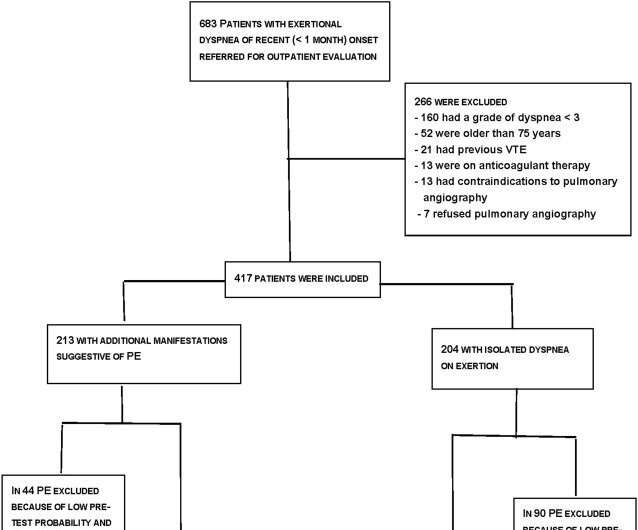This article has been reviewed according to Science X's editorial process and policies. Editors have highlighted the following attributes while ensuring the content's credibility:
fact-checked
proofread
Exertional dyspnea: A misleading presentation of pulmonary embolism

The Pulmonary Embolism Dyspnea Italian Study (PEDIS), just published in the Journal of Thrombosis and Haemostasis, has demonstrated for the first time that the recent onset of severe respiratory fatigue due to minor efforts, especially in young subjects, can be a symptom revealing a pulmonary embolism in 1 out of 3 cases.
The study, which involved over 400 patients under the age of 75 from 14 Italian hospitals, documented how 32% of the subjects who went to the emergency room due to onset, in the previous month, of severe respiratory difficulty (dyspnea) arousing after minimal and previously well tolerated physical exertion (such as walking 100 meters on level ground) had an underlying pulmonary embolism.
This percentage reached about 47.3% of patients who also presented with other signs or symptoms suggestive of pulmonary embolism (such as tachycardia, chest pain or syncope) but remained not negligible (20%) in those who turned to the emergency department for the onset of isolated exertional dyspnea.
"Faced with the presence of this symptom, the physician generally thinks of heart failure, ischemic heart disease, bronchial asthma, pneumonia or other pulmonary diseases, aortic stenosis, thyrotoxicosis, anemic states, even psychic alterations," explained Professor Paolo Prandoni, first author of the research, "but the results of this study clearly indicate that we must evaluate any patient who arrives in the emergency room for severe exertional dyspnea, especially if young, for pulmonary embolism (primarily through clinical probability and d-dimer) even if the symptom has arisen for several days and we are in the presence of alternative diagnoses that could justify it."
More information: Paolo Prandoni et al, Prevalence of pulmonary embolism among patients with recent onset of dyspnea on exertion. A cross-sectional study, Journal of Thrombosis and Haemostasis (2023). DOI: 10.1016/j.jtha.2022.09.007




















